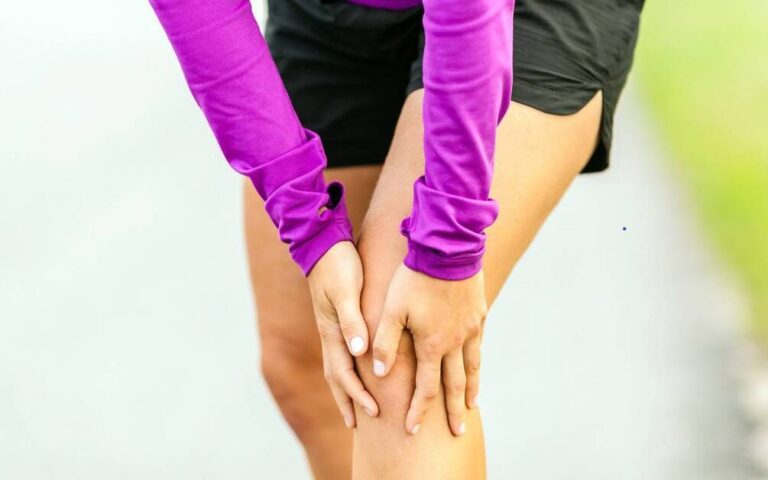Adults frequently experience knee discomfort, which is frequently attributed to ordinary wear and tear from daily activities including walking, bending, standing, and lifting. Running and sports involving leaping or rapid twists increase the risk of knee discomfort or issues in athletes. It can be annoying and even debilitating in certain situations.
The knee is a delicate joint that receives a lot of stress from daily activities such as lifting and kneeling, as well as strenuous exercises such as jogging and aerobics.
The knee consists of the following parts :
- Tibia
- Femur
- Patella
A layer of cartilage covers either end of the bone, absorbing shock and safeguarding the knee. Basically, the knee is made up of two long bones attached to muscles, ligaments, and tendons.
The knee involves two muscle groups: the quadriceps (front thigh), which straightens the leg, and the hamstrings (back thigh), which flexes the knee.
Tendons are chains of tough tissue that connect muscles to bones. An elastic band of tissue called a ligament joins two bones. Some ligaments in the knee stabilize and protection to the joint, and other ligaments limit the forward and backward motion of the shin bone (tibia).

THINGS TO KNOW ABOUT KNEE PAIN
The most common causes of knee pain are aging injuries or repetitive strain on the knee.
Common knee problems include ligament sprains and strains, cartilage tears, tendonitis, and arthritis.
Diagnosis of knee problems includes a physical examination and the use of diagnostic tests like X-rays, MRI, CT, or arthroscopy.
Depending on the nature and severity of the issue, non-surgical and surgical therapy methods are available to manage knee pain and difficulties.
COMMON KNEE PROBLEMS
Many knee problems are a result of the aging process and constant wear and tear on the knee joint (such as arthritis). Other knee problems are the result of injuries or sudden movements that put a strain on the knee. Common knee problems include :
Knee ligament and/or muscle sprains or strains:- A knee ligament or muscle sprain or strain is usually caused by an impact on the knee or a sudden twist of the knee. Swelling, pain, and trouble walking are common signs and symptoms.
Torn cartilage:- Knee trauma can result in a tear of the meniscus, a pad of connective tissue that plays a part as a shock absorber and improves stability. Cartilage tears can often occur with sprains. Treatment may include wearing a brace to protect the knee from further damage during activity. Surgery may be needed to repair the laceration.

Tendonitis:- Tendinitis can occur from the overuse of tendons during certain activities such as running, jumping, and cycling. Jumper’s knee is the medical term for inflammation of the patellar tendon. This is common in sports like basketball, where the force of impact on the ground after a jump puts strain on the tendons.
Arthritis:- The most prevalent kind of arthritis that affects the knee is osteoarthritis. Osteoarthritis is a degenerative condition in which the joint’s cartilage gradually deteriorates. Middle-aged and elderly adults are frequently impacted. Excessive stress on the joint, such as from recurrent injuries or being overweight, can lead to osteoarthritis. By inflaming the knee joint and eroding the knee cartilage, rheumatoid arthritis can also have an effect on the knees. People frequently get rheumatoid arthritis at a younger age compared to osteoarthritis.
To know the root cause, get a quality diagnosis for your knee pain, and get proper treatment visit Specialty Care Clinics, call us now.
